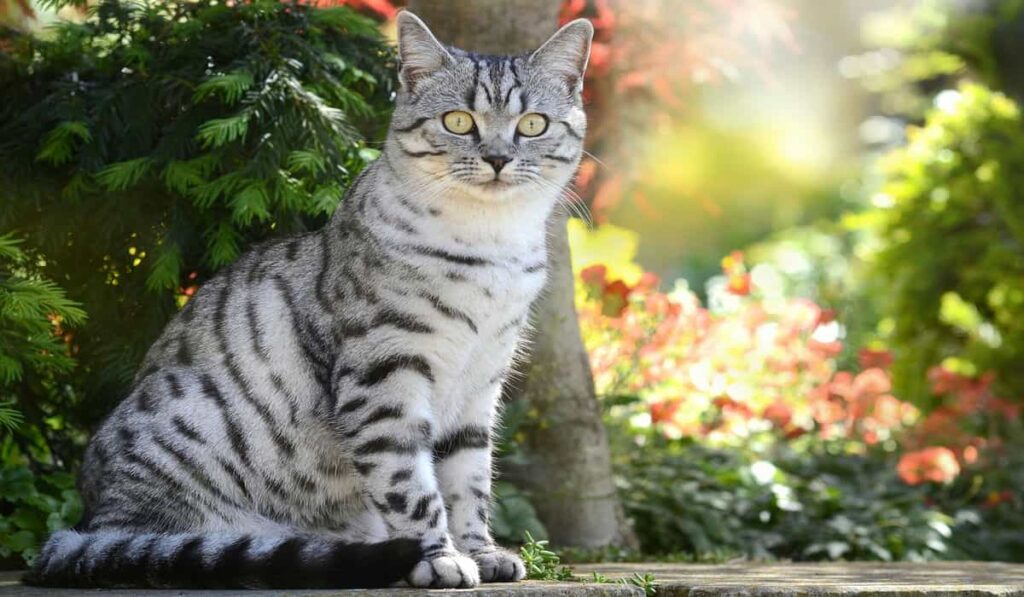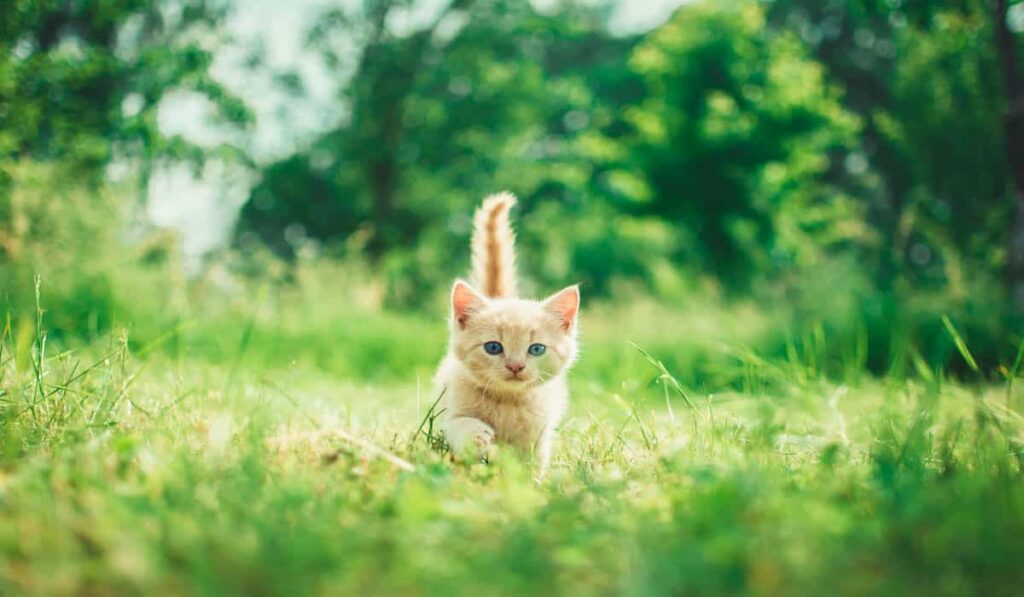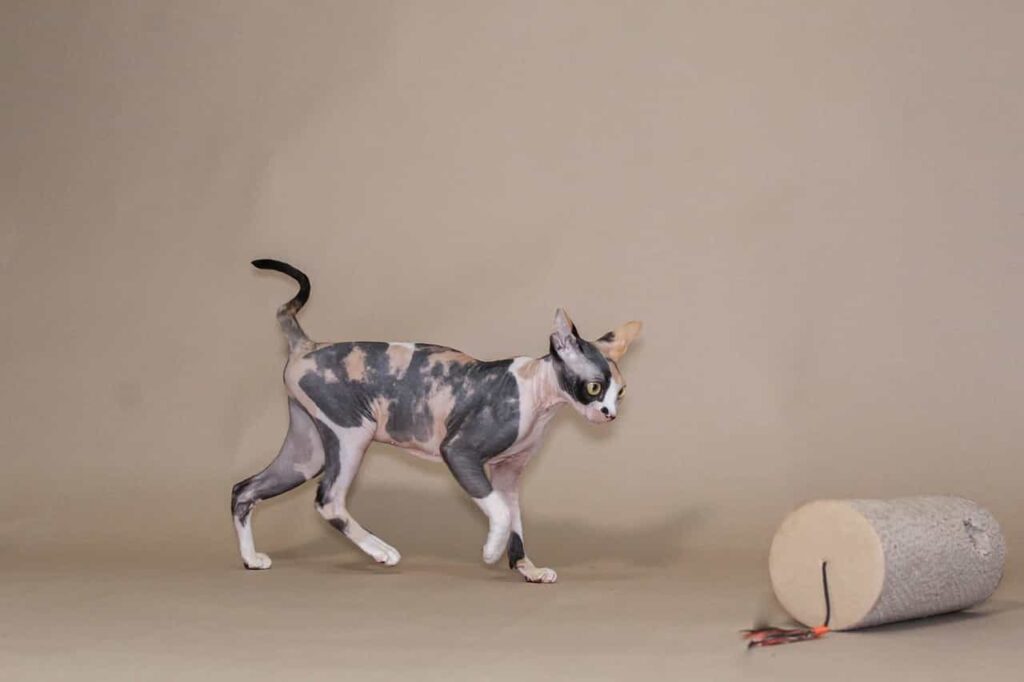The Domestic Longhair cat doesn’t belong to any particular and specific cat breed. It is a mixture of so many cat breeds. So, other longhaired named cats like British Longhair, American Longhair, Oriental Longhair, and some other longhaired breeds or cats shouldn’t be confused with Domestic Longhair cats.
Other longhaired cats have different and clear recognition from the leading and large cat associations all over the world. The Dometic Longhairs are also known as Long-haired house cats and Longhaird Moggies. Domestic Longhairs are the 3rd most common-typed cat in the USA.
Their heritage is mixed and unknown. For this reason, they aren’t recognized as a specific breed. Domestic Longhair cat has different terminology among cat fancies, veterinarians, and animal control agencies such as Domestic Longhair (DLH), House Cat Longhair (HCL), and Semi-Longhair Household Pet.
Though they don’t have any one or specific breed they have marked their presence in the cat world. They are originated in the USA and came by importing longhaired cats in the USA over centuries ago.


Table of contents
Special traits of the Domestic Longhair cat
Other names:
Long-haired house cats, Longhaird Moggies, Domestic Longhair (DLH), House Cat Longhair (HCL), and Semi-Longhair Household Pet.
Personalities and characteristics:
Playful, friendly, active, affectionate, docile, independent, aggressive, cuddly, mid-level vocal and intelligent, and excellent hunters.
Body size:
medium
Body height:
Both males and females are up to 10 inches. Maine Coons can be up to 30 inches.
Body weight:
Females are up to 12 pounds and males are 15 pounds. Maine Coon cats can be up to 20 pounds.
Coat size:
Medium to long
Coat colors:
All colors that Longhair cats come with.
Coat patterns:
All patterns that Longhairs come with.
Eye colors:
All possible colors that longhaired cats have.
Allergenic tendency:
No
Life circle:
Up to 20 years
Origin:
Not determined but it is considered that they originated in the USA.
The Origin of the Domestic Longhairs Cat
As you know that DLH is not one particular breed. The DHL cats are the result of centuries of unplanned crossbreeding and survival. It is also very possible the longhair is a natural mutation for survival. So, the history is unknown that actually from where and when the DLH cats were raised.
The first place of the cats is still a matter of speculation. There is no documented history of the DLH. you probably know that most cats’ ancestors are from either Siam (Thailand) or the Middle East of Asia. the ancestors of Domestic Longahirs are from the hottest deserts.
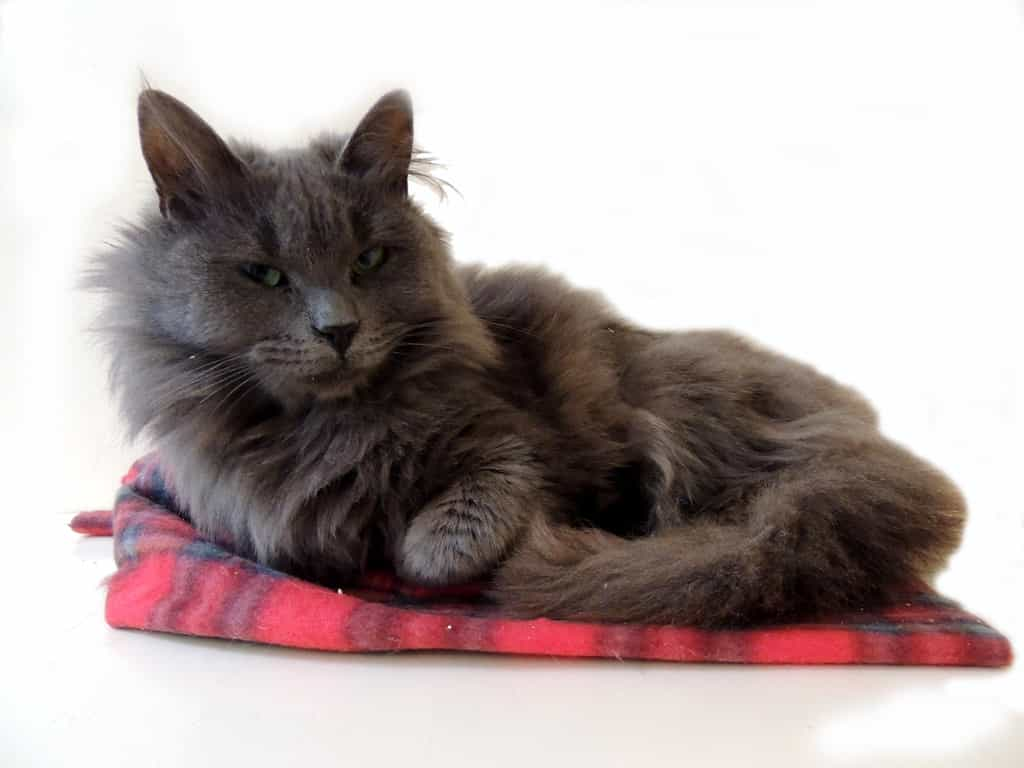

The longhaired cats were domestic cats in Western Asia for several centuries. In the 16th century, they were imported to Europe and 17th century to North America as those countries have only short-haired cats. In the mid of the 17th century, the population of England decreased due to the plague. The Flea-carrying rats were responsible for this. So, the imported Longhaired cats were used to control the population of rats.
The longhaired cat’s gene pool is very large and may be the result of a natural mutation. When a longhaired cat meets a Shorthair, a shorthair kitten will be produced.
More About Domestic Longhair cat Origin
In Europe, long-haired cats produced more and more long-haired kittens. They were documented in Italy in 1521 first. Peter Simon Pallas advanced the hypothesis that the Manul cats (Pallas cat) are most probably the ancestors of the longhaired Domestic cats. He told it in the late 18th century. He also established the evidence that Male Manul cats are sterile but the females can produce offspring and leave a small proportion of the Pallas gene.
In 1907, Zoologist Reginal Innes Pocock challenged the hypothesis and proved that Pallas’s theory was wrong. He compared the skull of a Manul cat and a Persian cat. There was a huge difference between the 2 cats. So, the hypothesis was overlooked.
However, the most accepted and reliable explanation is that longhaired cats were imported to Europe and the USA in the 16th and 17th centuries and the first settlers of the North American brought long-haired cats along with them. The long-haired cats met with the native domestic cats and wild cats. Their descendants are the modern Domestic Longhair cat. The first and ancient Domestic Longhair cats are the Persian cat and Turkish Angora cat breed.
Temperament and nature of the Domestic Longhair cat
Well, Domestic Longhairs are not a specific breed. So, their personalities and characteristics are never can be determined. The behavior and features can be changed drastically from cat to cat. Some of them still have the hunting traits of their wild ancestors and some of them totally adopted the domestic behavior.
But still, there are some common traits that all Domestic Longhair cats have in them. Such as-
- Independence:
The Domestic Longhair cats are very affectionate, lovely, friendly, cuddly, calm, and gentle cats. They’re not clingy. They love to spend some time on their own. They will come to their owners and families on their own time.
- Self-assurance:


Normally Domestic Longhair cats are shy and quiet cats but at the right time, they are confident and curious cats also.
- Hunting tendency:
The Moggies have been feeding them from the date back centuries. You can be sure that if you leave them out, they will return home with a gift of a dead animal such as a fish, bird, or rat.
Whatever their nature and characteristics are, they’re the original cats for sure.
Are Domestic Longhair Cat good pets for families?
The DLH cats are excellent family pets. Some of them can tolerate even naughty children and noisy households. They’re basically quiet and calm cats but you should keep an eye on them so that can’t get injured in the rough household.
Some Domestic Longahirs are aggressive by nature. So, you and your family members should be well-behaved and know how to treat Domestic Longhair cats.
Do the Domestic Longhair Cat get along with other pets?
Most domestic cats get along with other pets and DLHs is not the difference but the other pets should be cat-friendly and gentle. As you know Domestic Longhairs have hunting ancestry so small animals like Hamsters, birds, and Aquarium fishes are not safe from them. So. if you have both DLH and small animals in your house then keep the small animals at a safe distance from your Moggy.
Caring, grooming, exercise, and training for the Domestic Longhair cat
Caring:
The Domestic Longhair cats are usually very active and playful cats. Some of them love to climb and jump. So, you have to pride them on interactive toys, cat shelves, and cat trees. Some of them also have hinting tendencies. So, you better provide with them an open playground to run and play. You can also keep a cat tent and cat enclosure so that they can take a cat nap.
The Moggies also like to watch outside views, birds, and a sunny tall window so that they can rest in the daytime. So, provide with them the window.
Spare some time daily to play and cuddle with them. Some DLHs can’t stay alone for a long period of time. So, fix a family schedule to give time to your Moggy or you can keep 2 cats in your house so that they can give time to each other. Keep your cat indoors and don’t leave it outside without supervision.
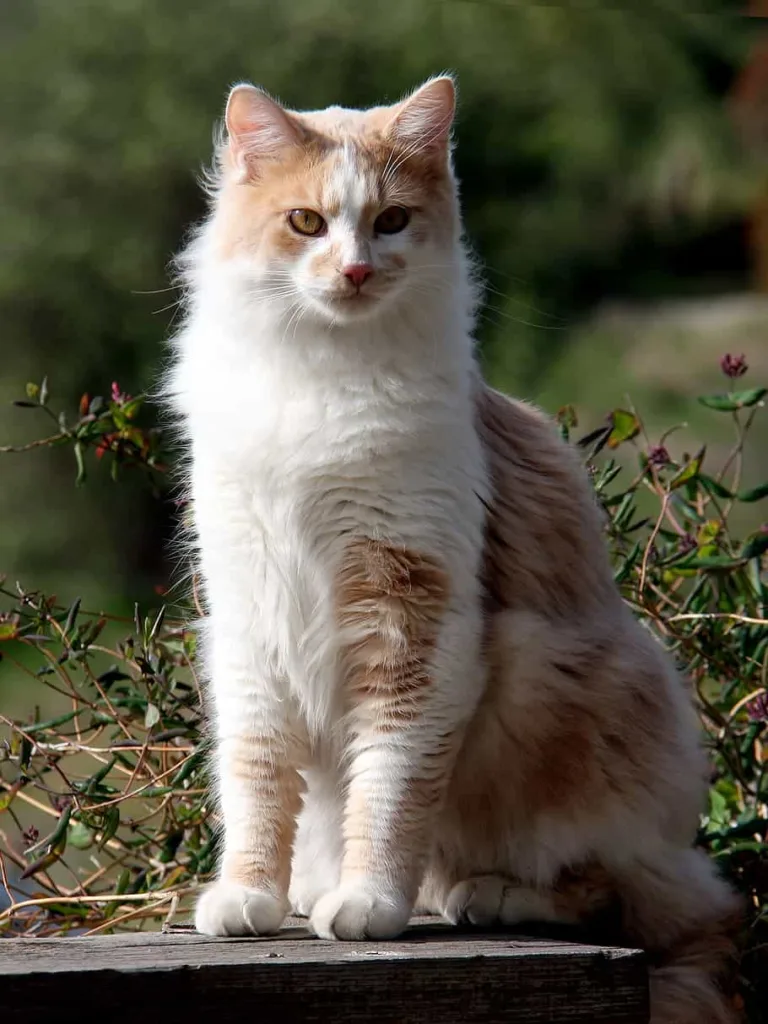

Domestic Longhair cat Grooming
The most challenging and inconvenient part of having a DLH is taking care of their coats. As they’re longhaired so some of them like Persians and Maine Coons are not easy to be groomed. Maybe their coats are luxurious and beautiful but the thick coats need much grooming to get free from excessive shedding and matting.
The long coats also have hairball problems and if your cat swallows hairballs then it will be dangerous. They need daily and frequent brushing in the Spring season to keep the coats soft, silky, and tangle-free, and weekly one-time brushing for the rest of the years. Cleaning long coats is a mess you know. You may need to bathe them to clean the coats if get dirty. Regular tooth brushing is very important for all cats. So, check your cat’s oral health weekly and brush their teeth daily with cat toothpaste and toothbrush.
Some DHL has long ears such as Maine Coons, some have folded ears like Scottish Fold and Ameircan curls. These breeds are prone to ear infections and debris. So, regular checking and cleaning of their ears are essential. Trim the nails of your Moggy after every 15 days and keep a scratching area in your house for their scratching.
Domestic Longhair cat Exercise
Though cats need less exercise than other animals it doesn’t mean that they don’t need to be active. They need a regular play session with moving wands and feather toys, food puzzles, cat trees, or shelves at least for 20 minutes. Indoor and domestic cats are prone to obesity and Diabetes. So, daily exercise and an active life are a must.
Training:
Training your cat is essential for you and your cat’s well-being. Teach and make sociable your Domestic Longhair cat immediately after adoption or purchase.
Teach them to listen to your commands, respond by calling their names, most important litter box training, clicker training, and also leash training. Maine Coons are so much big and smart that you can take them to walk like a dog. Some Domestic Moggies are not so well with the strangers. So, train them to be easy and not to be shy with strangers.
Health and problems of the Domestic Longhair cat
The Persian and other flat-faced Domestic Longhair cat breeds are a bit problematic among the DHL cats. As they have flat faces and snub noses so they have problems with excessive tearing and breathing. Besides, they don’t have any specific breed-related problems as they are not just one breed. All Domestic Longhairs are prone to some common heath problems a and issues. Such as:
Heart diseases:
Hypertrophic Cardio Myopathy (HCM): The heart walls get thickened and make obstacles to pumping and supplying blood to the body.
Broncho Pneumonia:
If excessive coughs get deposited in the lungs, it is called Broncho Pneumonia.
Kidney diseases:
Polycystic Kidney Disease( PKD):
When some systems grow in on the Kisney and extreme pain occurs and make obstacles to urinating- it is called PKD.
Bladder Stone: When Calcium deposits in the bladder and became small and medium-sized stones- called Bladder stones. Cats are very expert to hide their urine problems. So, if you see that your Domestic Longahirs urinate outside the litter box then it’s time to go to the veterinarian immediately.
More Domestic Longhair cat Health and problems
Viruses and infections:
Your DLH cats are prone to get infected by viruses by getting close to other cats and fighting them. So, don’t let your cat go outside without supervision. They also can be infected by walking on wet soil and being beaten by the infected mosquitoes. Hook Worm, Ring Worm, and other mites can attack your kitty. So, keep it vaccinated with upgradation all the time.
Obesity and Diabetes:
If you feed your Domestic Longhairs too much then it will become Obese and obesity causes Diabetes. So, be very much care so that your cat can’t get over-weigh.
Gum and teeth problems:
Gingivitis and other injuries inside the mouth and gum are very dangerous. So, take very good care of your Cat’s oral health.
Take your Domestic Longhair to the veterinarian after every 6 months for a regular vet check-up.
Upset stomach and lack of appetite:
If you change the patterns of food densely then your kitty can’t adjust to it. Their stomach may get upset and their appetite may be decreased. So, change should come gradually and in small quantities.
Osteoarthritis:
Upper respiratory Infections:
It causes frequent breathing keeping the mouth open.
Food and nutrition tips for Domestic Longhair cat
There are both big and medium-sized, more or less active, and big and small appetizers are present in Domestic Longhair cats. So, their feeding amount depends on their breed, size, appetite, age, activity, playing level, and also age. So, consult your veterinarian or the person from whom you have got your Domestic Longhair. He will tell you the food quality, measurement, and also schedule.
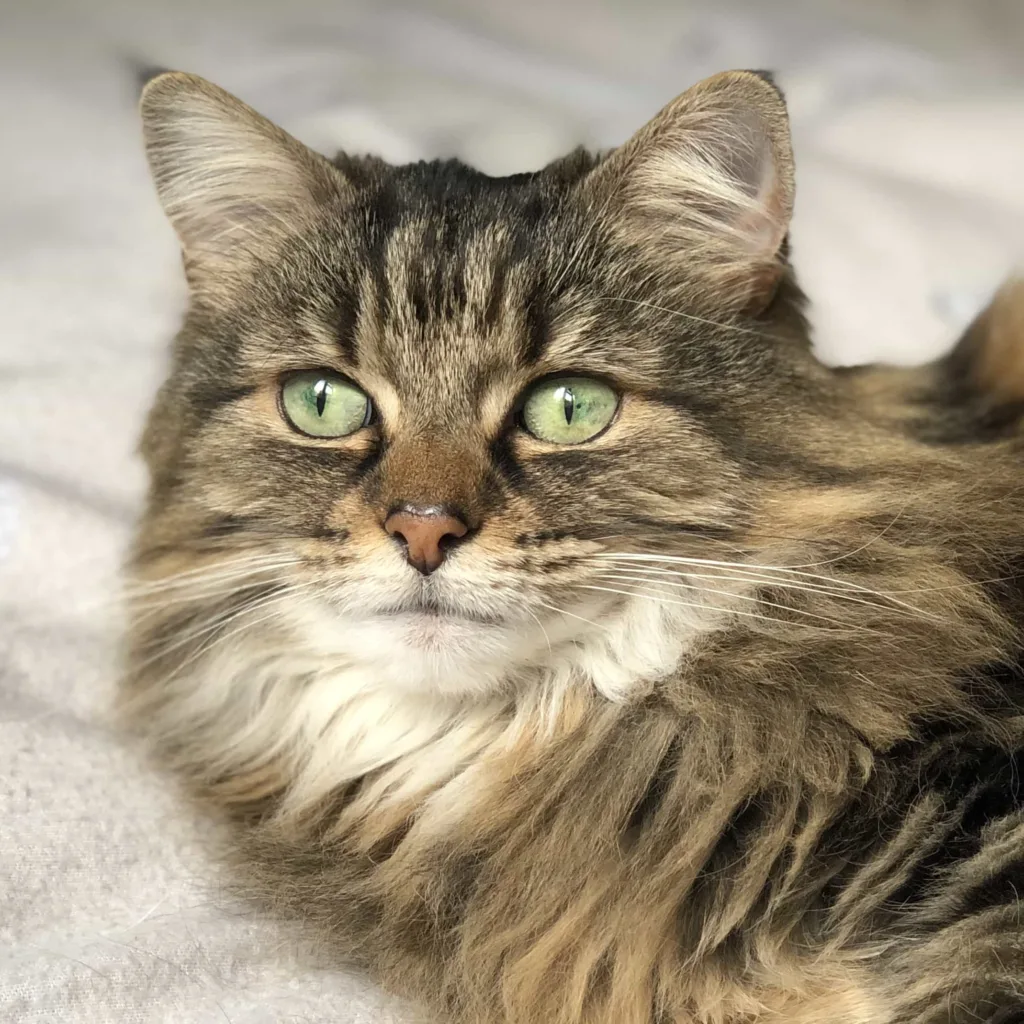

All cats are carnivorous. So, you must provide with them fish and meat-based food. Grains and vegetables are not needed for the cats. Provide with them a lot of fresh and clear water. If your cat is a poor drinker then provide with them 50% wet food to keep their Kidney in a good condition and save from them dehydration.
Some facts about Domestic Longhair cat
- Domestic Longhair cats are not a specific breed. They have so many ancestries. So, it can’t be tressed that actually from where and when they’re hailed.
- The longhair trait of the Domestic Longhair cats can be a natural mutation for surviving in the extreme condition of Europe and America.
- It is very much possible that the ancestors of the Domestic Longhair cats came with the first settlers of Europe and America.
- In the 16th and 17th centuries, Long-haired cats were imported to Europe and North America as those areas only have shorthaired cats.
- Most Domestic Longhairs are excellent hunters. Small animals like Hamsters, birds, and aquarium fish are not safe from them.
- The Domestic Longhair cats can participate in the championship and shows though they are not a breed or can be specified. The cat shows and championships have a ‘Household Pet Division’ in which all domestic cats can participate.
More facts about Domestic Longhair cat
- According to the Federation Internationale Feline (FIFe), a domestic cat with all eye colors, coat colors, patterns, and coat sizes can participate in the ‘Household Pet Division’ of the cat shows and competitions. The other cat associations have their own criteria for participation.
- The Domestic Longhairs are the Plague and rodent fighters once. They fought against the rodents who were responsible for to spread of plague disease in the mid-17th Century in Great Britain. They killed the rats and rodents and played a great role to control the rat population to save the human population.
- There was a cabinet cat in the United Kingdom, named Humphrey. Humphrey was a street cat in London. It was found just the outside of the British Prime Miniter’s office 10 Downing Street.
However, Humphrey had phenomenal expertise to catch and kill rats. So, the cat was appointed to keep the British Cabinet free from rodents and hamsters. the British Government paid the cat $200 yearly at that time. Humphrey was a Domestic Longhair cat and became famous. The cat got an official name of ‘Mouser to the Cabinet Office.’
Differences between male and female Domestic Longhair cat
There are not many differences between male and female Domestic Longhair cats in size, appearance, and playing and activities. The difference comes only in their nature and temperament. The male Domesics are more aggressive, sociable, brave, and territorial as they get sexually matured.
They make a territory by spraying their urine and they may have a tendency to run away from home. As they get neutered they become more calm, lovable, and adorable. Whereas, female cats are shy, dependent, introverted, and calm by nature.
The breeds that are included in Domestic Longhair cat
The Domestic Longhair is not a specific or particular breed at all. There are so many long-haired breeds called Domestic Longhairs. All are now fully domestic cats and come in longhaired coats. That way, all are Domestic Longhair cats. I am telling you about some Domestic Longhair cats so that you can choose the right one for you.
Maine Coon cats are more luxurious than long-haired ones. They’re one of the largest cat breeds. The big-sized cats are born to adapt to the extreme cold and wooden situations around them. A very sweet and calm cat breed is Maine Coon, which originated in the USA.
Persian cat breed:
The flat-faced and snub-nosed breed has 7 color divisions of its own. One of the oldest luxury cat breeds is the Persians. Except for its breed-related issues, it is a nice cat breed of the Domestic Longhair version and originated in Persia (Iran).
The curly-eared cat is also an example of a Domestic Longhair cat.
The Balinese breed is nothing but the long-haired version of the
Siamese cat. The Balinese breed is a natural mutation. It originated in Siam (Thailand).
Birman cat:
The ‘Priest cat’ Birman originated in Burma ( Myanmar). It is another example of Domestic Longhair cats.
Himalayans are the color variety of Persian cats but some cat associations consider it as a separate breed.
More breeds that are included in Domestic Longhair cat
A usual bobtailed cat breeds Japanese Bobtails are both long-haired and short-haired cats and also domestic. So, it is also a Domestic Longhair cat.
Javanese cat
Javanese cats have Siamese Colorpoint coats. It is the result of the crossbreeding between Balinese and Siamese cats.
LaPerm cat:
The LaPerm breed has spontaneous curly coats. It has both long and short-haired versions.
Manx cat (Crimric cat):
Manx cats can be both Long-haired and Short-haired. The Crimric is the Longhaired version of Manx cat. The tailless cats are also Domestic Longhair cats.
The royal-looking fairy cats are famous for their adaption ability to the extreme cold of Europe and its relationship with Norse mythology.
Pixie Bob cat:
A large cat with wild looks and a dog-like personality.
Selkirk Rex:
Another curly-coated breed.
Somali cat:
The long-haired version of the Abyssinian cat breed.
Turkish Van cat:
The full White-furred cats came from the lake Van area. Another marvelous Domestic Longhair cat.
Tips for Domestic longhair cat
As there so many breeds are included in Domestic Longhair cats so you can get very easily from the breeders. First, acquire knowledge about the breed that you want to adopt or purchase then go to the website of the Cat Fancier’s Association (CFA) and The International Cat Association (TICA).
They publish a list of reputed and trusted breeders. So, contact the breeders from whom you can purchase a breed that is included in Domestic Longhair cats. As Domestic longhairs have so many breeds so you also can get them from Rescue and shelters. Search the websites of adopt-a-pet.com, ASPCA Cat Adoption, and Specialty Purebred Cat Rescue.
As the Domestic Longhair cats are the 3rd most popular domestic cats in the USA so you won’t face any difficulties having them, I assure you.

